More than 150 insulating glass lines with Ködispace 4SG in operation
It is clear that to continually improve the energy efficiency of buildings and to reduce CO2 emissions insulating glass utilizing high performance warm edge spacer system technology is absolutely essential. That is why more and more insulating glass manufacturers count on the specialized Warm Edge technology from adhesives and sealants manufacturer H.B. Fuller | KÖMMERLING. The Ködispace 4SG system, dispensed from a drum is key to highly efficient, economical, and fully automated insulating glass production and most importantly future proofing the next generation of insulating glass design and production.
Energy efficiency is recognized as one of the main functions of modern building design both from an economic and an environmental perspective. As a result, there is little doubt that building standards and regulations will become ever more stringent in the coming years. This focus extends not only to newbuild projects but also to the renovation of existing properties. According to the VFF (German Window and Facade Association) and BF (German Flat Glass Association), 40 percent of existing windows require replacement in 2021. In order to satisfy this perpetually growing demand for high performance insulating glass, manufacturers are installing automated production lines applying the latest, highly durable reactive warm edge spacer technology from H.B. Fuller | KÖMMERLING: In the last five years the number of production lines using the Ködispace 4SG sealant, patented in 2012, has doubled and currently, there are over 150 production lines in operation throughout the globe.
The “Rufus 2.0” project – ultra-modern building complexes in Seattle
Rufus is still an important part of the Amazon story. You can tell by the fact that the online shipping giant gave its modern new building project the name “Rufus 2.0”, which was completed last year. “The Spheres” glass igloos are certainly one of the project’s most spectacular buildings. The three interconnected domes are reminiscent of the Eden greenhouse in Cornwall, a botanical garden in a class of its own. The counterpart in Seattle serves as a lounge and greenhouse and is the new landmark of the emerging metropolis. Large glass fronts were not only used for “The Spheres”, but also for the numerous high-rise buildings on the Amazon site – for example the “Day 1” and “Doppler” glass towers.
Block 18 was also built as part of “Rufus 2.0”. It is a 17-storey building in the Denny Triangle neighbourhood and houses some 36,046 square metres of office space. Block 18 was designed by the Seattle-based Graphite Design Group an architectural firm based on the model of an urban treehouse. One of the main features of the high-rise building is its treehouse staircase. From the outside, it looks as if this wooden staircase, which zigzags up 17 floors, is holding together or connecting the two glass parts of the building. Construction work began in 2018 and the office complex has been completed for a year and a half.
The Durable System from a Single Source
Ködispace 4SG reactive thermoplastic spacer (TPS) forms a chemical bond to both the glass and the secondary sealant, resulting in an extremely stable and flexible edge seal. The result is a functional warm edge that far exceeds current global industry requirements for both moisture vapor transmission resistance and gas tightness. This functional chemistry ensures high thermal performance of the insulating glass elements for many decades, even under extreme climatic and mechanical loads. Durability is further guaranteed by the manufacturer's tested and compatible sealant combinations. The flexibility, mechanical stability and resulting long term durability of the Ködispace 4SG reactive thermoplastic spacer system is also repeatedly proven by H.B. Fuller | KÖMMERLING through intensive material tests, component tests and finite element analyses.
Fully Automated Production Lines
CNC-controlled application process of Ködispace 4SG also offers many advantages for the insulating glass industry. A warm-edge TPS system replaces the combination of spacer, desiccant and primary sealant components found in conventional spacer systems with just one robot applied solution. The production of these insulating glass units runs fully automatically on one single line. Robot application of both spacer and secondary sealant enables instant automatic switching between different spacer thickness and ensures incredibly accurate spacer alignment across double glazed or multi-cavity assemblies. With Ködispace 4SG delivered in a drum, storage becomes easier, safer and requires less space, material wastage is greatly reduced resulting in a much lower inventory cost for the processor / manufacturer. Additionally, Ködispace 4SG Warm Edge technology is designed for structural glazing applications including facades with cold-bent glass. H.B. Fuller | KÖMMERLING also supports innovative customer projects, providing technical design support and expertise through calculations for joint dimensioning or finite element analyses based on material laws developed in-house. Dr. Christian Scherer, Head of Business Development Glass at H.B. Fuller | KÖMMERLING, is delighted with the continued growing contribution to environmental design and sustainable manufacture and points out that, "Ködispace 4SG provides the industry with a unique warm-edge spacer system applied with full automation that can be used to produce high performance insulating glass units for a wide range of applications from windows to facades, whilst ensuring cutting edge durable gas-tightness and maximum design freedom."
.
About H.B. Fuller | KÖMMERLING
Since 2017, Kömmerling Chemische Fabrik GmbH has been part of the US adhesives group H.B. Fuller | KÖMMERLING. The world’s largest supplier of adhesives and sealants covers versatile and demanding adhesive and sealant applications with its three business areas – Engineering Adhesives, Construction Adhesives and Hygiene, Health and Consumable Adhesives – which are used in a range of industries such as electronics, hygiene, medicine, transport, construction and renewable energies. The international group generates sales of of close to 3 billion US dollars and has 6,500 employees serving customers in more than 125 countries. The Pirmasens site has become the “Technology Centre of Excellence” for insulating glass applications and is responsible for the research and development of new products and application fields as well as advancing existing expertise.
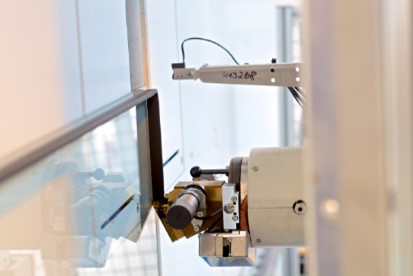

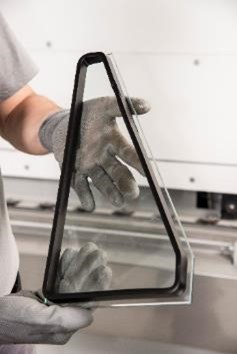
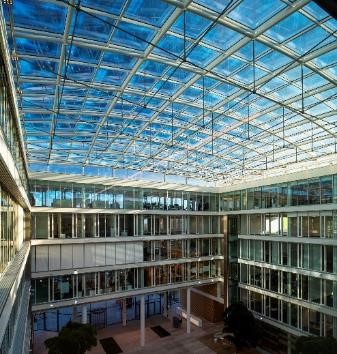
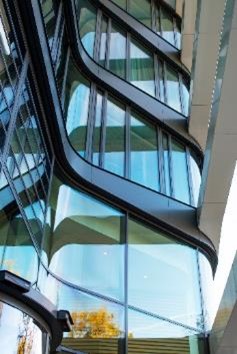
Weitere Informationen und Belegexemplar an:
Kömmerling Chemische Fabrik GmbH
Alexandra Rohr
Zweibrücker Str. 200
D-66954 Pirmasens
Image credit: Kömmerling Chemische Fabrik
Spectacular event location features the Warm Edge system
from H.B. Fuller | KÖMMERLING
Glass parallelograms for the Sphere in Las Vegas
The Sphere is now acknowledged as the world’s largest spherical structure. The new event centre in the casino city of Las Vegas, USA, is attracting worldwide attention with its sensational LED outer shell. The structure also conceals insulating glass units in the form of parallelograms. They are equipped with the robust and exceptionally durable Warm Edge system from sealant and adhesive manufacturer H.B. Fuller | KÖMMERLING, which enables tremendous design freedom thanks to robot-assisted production.
“A truly stunning event location”, “the largest LED screen of all times”, “the most expensive building in the city” or simply “the next World Wonder” – the Sphere in Las Vegas, USA, is triggering exuberant reactions all over the world. The new event centre is located east of the famous Las Vegas Strip close to the Venetian Resort luxury hotel – and now plays a significant role in shaping the appearance of the downtown area. With the dimensions of the giant sphere at 112 metres high and 157 metres wide it surpasses those of all existing spherical structures. Even New York’s Statue of Liberty or the twin towers of Munich’s Frauenkirche could disappear under the dome. The Sphere, however, is being celebrated as the new iconic landmark of the Las Vegas skyline primarily for what is happening on its shell. It is almost entirely constructed as an LED display and first demonstrated its breathtaking capabilities on 4 July 2023, America’s Independence Day when videos of the sensational light show went viral on social media worldwide.
A 2.3 billion US dollar mega-project
Since then, some 1.2 million individually controllable LED elements have been illuminating the sky of the Mojave Desert in Nevada and displaying every conceivable form of light animation over an area of 54,000 square metres. At times a basketball, a globe, fireworks or even an underwater world, the possibilities of the Sphere’s programmable lighting are virtually inexhaustible and nothing less than awe-inspiring. Architecture becomes light, shapes appear to dissolve and reassemble, entertainment and architecture merge into one.
The Sphere is the brainchild of the American Madison Square Garden Company (MSG), which brought numerous construction and technology partners on board to plan and implement the project. The building has been under construction on and off since 2018 and was completed in the summer of 2023 – a mega-project that cost roughly 2.3 billion US dollars.
Double spherical construction with LED technology outside and inside
The structure itself comprises two spheres nested inside each other with the geographical shape resting flattened on the ground. Underneath the LED-clad steel skeleton of the outer skin, the so-called exosphere, there is a smaller sphere, also built on the basis of a steel skeleton, but covered with an additional concrete coating. The interior of the building resembles an amphitheatre with a stage and steeply rising tiers. The cantilevered auditorium extends over nine storeys and is also lined with an LED screen that spreads almost entirely over the sides and the domed roof. Expansive video projections combined with a huge sound system create an immersive visitor experience that is further enhanced by haptic experiences such as moving seats, scents and wind. In the future, the Sphere will offer some 20,000 seats for exceptional live events. For the grand opening on 29 September 2023, the Irish rock band U2 will be doing the honours.
Insulating glass units in unusual shapes
In addition to the LED elements, hundreds of state-of-the-art insulating glass units are built into the overall structure. The majority of them do not feature the usual 90-degree corner angles, but instead correspond to the shape of a parallelogram. This was not only challenging when producing the units, but also when it came to ensure the integrity of the glass’ edge seal. Insulating glass units with the Warm Edge system from H.B. Fuller | KÖMMERLING were used for the Sphere. The reactive thermoplastic spacer system boasts a distinctive appearance, maximum energy efficiency and a long service life. Warm Edge technology achieves this thanks to its unique structure: It consists of only one sealant, which is applied fully automatically by a robot and chemically bonds with both the glass surface and the silicone secondary sealant. As a result, the entire edge seal ‘fuses’ into a flexible, exceptionally resilient unit with superb gas-tightness and maximum service life.
Durable Warm Edge insulation from H.B. Fuller | KÖMMERLING
The durability of the edge seal is paramount – especially under high thermal loads and in extreme climatic zones such as Las Vegas. The insulating glass units need to remain energy-efficient over the long term and insulate the building from heat penetration or heat loss. Insulating glass with the elastic Warm Edge system from H.B. Fuller | KÖMMERLING has proven itself to be extraordinarily robust, resilient and durable in this respect.
At the same time, the precise, robot-assisted application of the black sealant enables glass units with unusual shapes, such as the parallelograms at the Sphere, to be produced fully automatically and consistently achieving the highest quality standards. The shape and size of the insulating glass are virtually irrelevant. Despite very acute angles, organically flowing shapes at the edges of the glass or complex geometries – this production method ensures complete design freedom. Moreover, the insulating glass units do not exhibit any misalignment of the Warm Edge and offer an unobstructed view, since the black edge seal prevents any disturbing light reflections from appearing in the cavity between the panes. The Warm Edge system from H.B. Fuller | KÖMMERLING is perfectly suited for worldwide use in glass architecture with the most ambitious requirements.
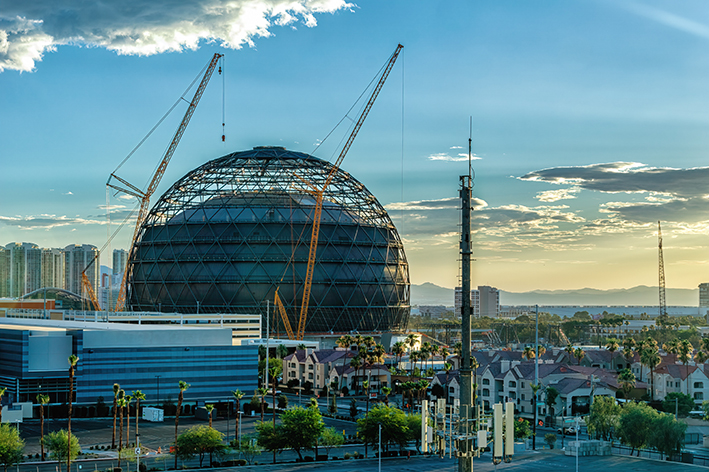
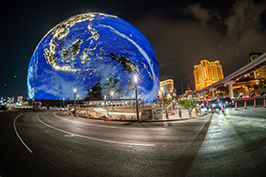
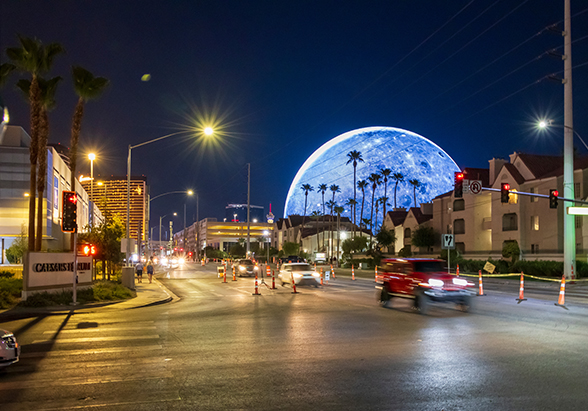

About H.B. Fuller
Kömmerling Chemische Fabrik GmbH has been part of H.B. Fuller group for over six years. Since 1887, the US-based company has been a leading global adhesives provider focusing on perfecting adhesives and sealants to improve products and lives. With fiscal 2022 net revenue of $3.75 billion, H.B. Fuller’s commitment to innovation and sustainable adhesive solutions brings together people, products and processes that answer and solve some of the world's biggest challenges. Our reliable, responsive service creates lasting, rewarding connections with customers in electronics, disposable hygiene, medical, transportation, aerospace, clean energy, packaging, construction, woodworking, general industries and other consumer businesses. And, our promise to our people connects them with opportunities to innovate and thrive. Learn more: https://www.hbfuller.com/.
Weitere Informationen und Belegexemplar an:
Kömmerling Chemische Fabrik GmbH
Alexandra Rohr
Zweibrücker Str. 200
D-66954 Pirmasens
Image credit: Kömmerling Chemische Fabrik
Ultra-modern design and sustainability thanks to the warm-edge system from H.B. Fuller | KÖMMERLING
In Seattle’s South Lake Union neighbourhood, one office building follows the next. But these aren't just any offices. This is where the headquarters of online giant Amazon are located. Between modern cafés and restaurants, 40 office buildings rise from the ground. In 2021, the company expanded its headquarters and built more modern glass buildings as part of the “Rufus 2.0” project – including Block 18. This office building was designed in the image of an urban tree house. A wooden staircase winds through the centre of the building, immediately catching the eye from the outside thanks to the glass façade. These glass elements were brought to life using the Ködispace 4SG warm-edge system from H.B. Fuller | KÖMMERLING to meet the high specifications in terms of excellent energy efficiency, durability and ultra-modern design.
There is hardly another inner city in North America that is as dominated by one single company as Seattle. Ten years ago, the Amazon online mail order company moved to the South Lake Union neighbourhood – not far from the eponymous park and lake. Today, the headquarters not only encompass 40 buildings, there are modern cafés, restaurants and food trucks on every corner. An Amazon tram even takes employees and visitors to the very centre of the Amazon headquarters. There, at the heart of the city, one office building follows the next. Names are virtually always written in large block letters on the façades of the Amazon buildings. Sometimes a building is named after Fiona, the first Kindle e-book reader, sometimes after the previous owner of the building, the “Van Vorst” mattress factory.
There is a very special story behind the “Rufus” building. Amazon’s first campus dog was a Welsh Corgi named Rufus. He belonged to Amazon’s former editor-in-chief and chief engineer and would accompany him to the office every day. The four-legged friend was affectionately dubbed “Amazon’s smallest volunteer” and evolved into an unexpectedly productive member of the team. For example, employees let Rufus click the computer mouse with his paw to launch some of the very first Amazon pages. The online giant is still a dog-friendly employer to this day: at the Seattle headquarters, every day is an open day for dogs. Employees can bring their four-legged friends to work, there are special dog parks and it is not unusual to find food and water bowls in the lobby areas of the buildings.
The “Rufus 2.0” project – ultra-modern building complexes in Seattle
Rufus is still an important part of the Amazon story. You can tell by the fact that the online shipping giant gave its modern new building project the name “Rufus 2.0”, which was completed last year. “The Spheres” glass igloos are certainly one of the project’s most spectacular buildings. The three interconnected domes are reminiscent of the Eden greenhouse in Cornwall, a botanical garden in a class of its own. The counterpart in Seattle serves as a lounge and greenhouse and is the new landmark of the emerging metropolis. Large glass fronts were not only used for “The Spheres”, but also for the numerous high-rise buildings on the Amazon site – for example the “Day 1” and “Doppler” glass towers.
Block 18 was also built as part of “Rufus 2.0”. It is a 17-storey building in the Denny Triangle neighbourhood and houses some 36,046 square metres of office space. Block 18 was designed by the Seattle-based Graphite Design Group an architectural firm based on the model of an urban treehouse. One of the main features of the high-rise building is its treehouse staircase. From the outside, it looks as if this wooden staircase, which zigzags up 17 floors, is holding together or connecting the two glass parts of the building. Construction work began in 2018 and the office complex has been completed for a year and a half.
Robust, resilient and durable thanks to warm-edge system
As with many of the ultra-modern buildings on the Amazon campus in Seattle, Block 18 also draws the eye with its spectacular glass façades. To meet the high demands for outstanding energy efficiency, reliable sealing, long-lasting stability of the façade and ultra-modern appearance, the glass elements were realised with the Ködispace 4SG warm-edge system from H.B. Fuller | KÖMMERLING. The reactive thermoplastic spacer for insulating glass ensures the highest energy efficiency and maximum service life. “Insulating glass with Ködispace 4SG has proven to be exceptionally robust, resilient and durable,” explains Dr Christian Scherer, Head of Business Development Glass at H.B. Fuller | KÖMMERLING.
The use of the elastic and reactive Ködispace 4SG thermoplastic spacer creates an edge seal that is flexible and gas-tight over the long term. The chemical bond of the material to both glass and the silicone secondary sealant ensures an extremely stable system. As a result, Ködispace 4SG not only compensates for the loads that occur due to the temperature differences between summer and winter that are common on the American West Coast, it also reliably keeps out moisture and wind. This is especially important in Seattle, where the climate tends to be dry in summer and humid in the other months. The functionality of the glass is permanently maintained thanks to the warm-edge system. This not only ensures a comfortable environment in the offices, but also sustainably reduces heating and air-conditioning costs in the long term.
The space between the panes is virtually invisible
The warm-edge solution also excels in terms of design. The spacer system is applied to the insulating glass fully automatically with an application robot. This enables high-precision production down to the tenth of a millimetre, even with multiple panes – without any of the disruptive offsets experienced with conventional spacer profiles. Ködispace 4SG also prevents unpleasant light reflections. While metal spacers detract from the appearance due to their shiny surface, the matt black Ködispace 4SG reflects the frame colour and makes the space between the panes virtually invisible – for a perfectly unobstructed view.
“Amazon has built its sprawling headquarters in Seattle with more than 40 state-of-the-art buildings. We are pleased to have contributed to giving one of these office complexes the flawless look it deserves with our warm-edge system,” says Dr Christian Scherer.
About H.B. Fuller | KÖMMERLING
Since 2017, Kömmerling Chemische Fabrik GmbH has been part of the US adhesives group H.B. Fuller | KÖMMERLING. The world’s largest supplier of adhesives and sealants covers versatile and demanding adhesive and sealant applications with its three business areas – Engineering Adhesives, Construction Adhesives and Hygiene, Health and Consumable Adhesives – which are used in a range of industries such as electronics, hygiene, medicine, transport, construction and renewable energies. The international group generates sales of of close to 3 billion US dollars and has 6,500 employees serving customers in more than 125 countries. The Pirmasens site has become the “Technology Centre of Excellence” for insulating glass applications and is responsible for the research and development of new products and application fields as well as advancing existing expertise.
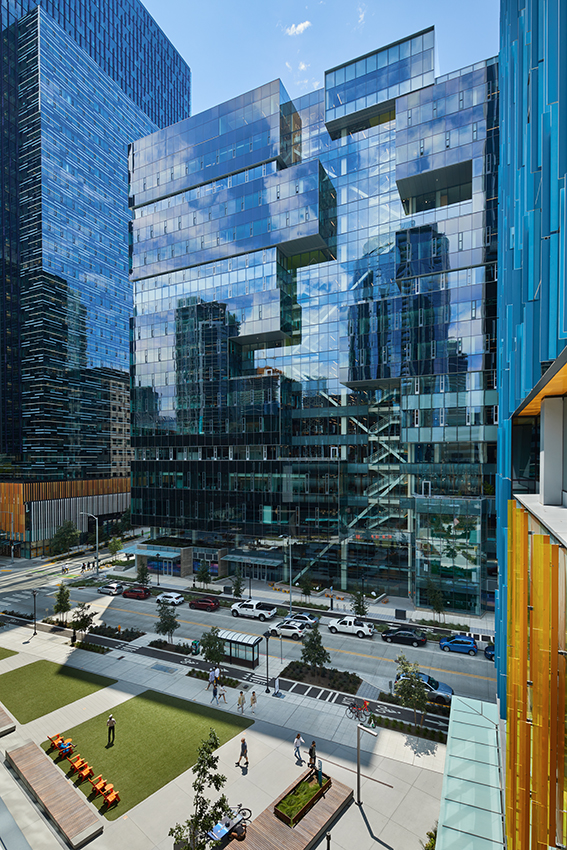

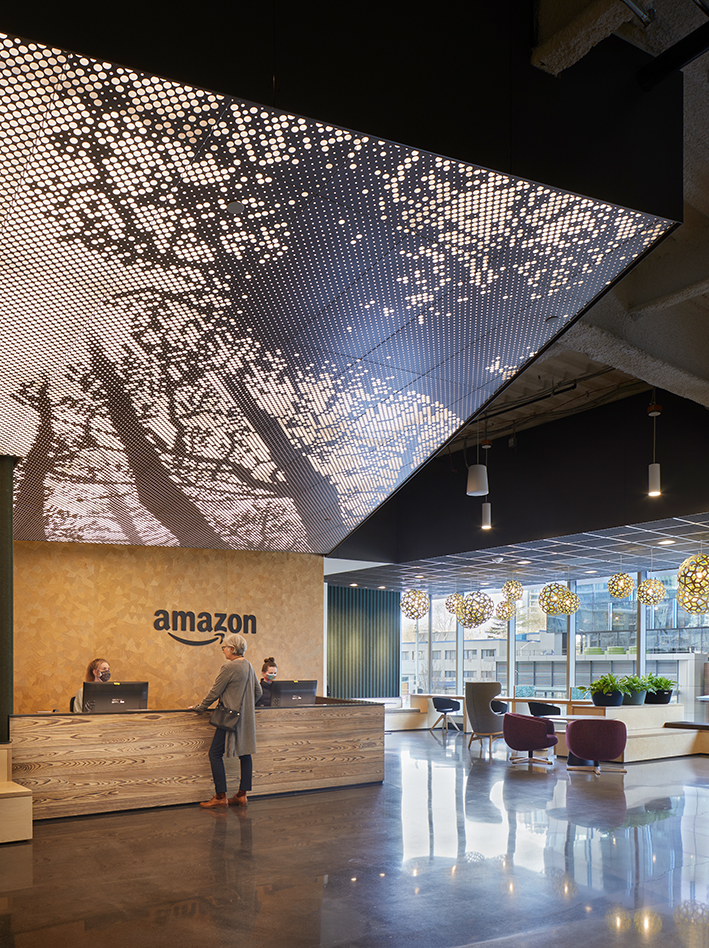
Weitere Informationen und Belegexemplar an:
Kömmerling Chemische Fabrik GmbH
Alexandra Rohr
Zweibrücker Str. 200
D-66954 Pirmasens
Image credit: Kömmerling Chemische Fabrik
The NEWTON relies on warm edge technology from H.B. Fuller | KÖMMERLING
Property developers and employers are increasingly investing in innovative real estate projects that sensibly combine New Work and Zero Waste concepts. A prominent example of such a super-efficient and attractive construction project is the NEWTON in Munich’s Westend, an office property from the TÜV SÜD Gruppe München, completed in 2018. What makes its ultra-modern façade stand out, among other things, are the sophisticated cold-bent, double-curved insulating glass units in the roof dome. To ensure that these meet the high demands for reliable edge-sealing and long-lasting stability, the ultra-high-performance Ködispace 4SG warm edge system from adhesive and sealant manufacturer H.B. Fuller | KÖMMERLING was used.
In recent years, Munich’s Westend has increasingly developed into a popular residential and nightlife area. The successful mix of old and new buildings, small pubs and popular restaurants, as well as the short distances to local recreation areas in and around Munich, make this new trendy neighbourhood especially attractive. At the same time an anprogressive business location has become established which, in addition to the well-known ADAC Tower, the Fraunhofer Institute and other renowned institutions, now boasts he NEWTON as its latest real estate project from the TÜV SÜD Gruppe.
In the NEWTON, a total of close to 35,000 m² of office space in 65 occupancy modules offer ideal conditions for new, forward-looking working environments accommodating up to 2,000 people. The glass-roofed hall forms the main focal point of the building and a forum for events. GEWE-therm 4SG insulating glass from SCHOLLGLAS were used to build the roof dome in the NEWTON. After production and delivery to the construction site, the insulating glass units were bent directly on site by experts from LAMILUX using an assembly and bending method that firstly fixes them to the frame construction diagonally, and then into their final shape.
All edges of the 1,850 x 1,850-millimeter insulating glass units are held in a linear manner using pressure bars and have a maximum corner deflection of 95 millimeters.
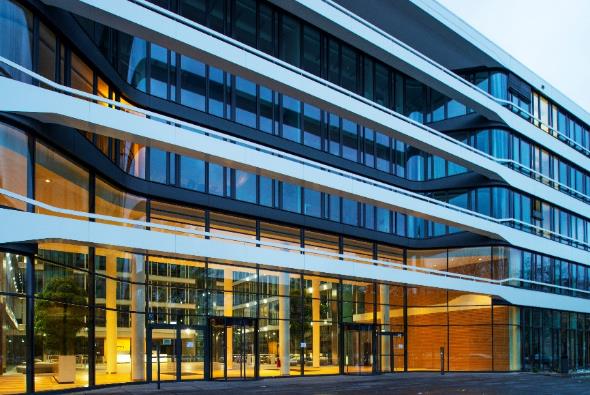
The results clearly showed that, especially with cold-bent insulating glass units, the Ködispace 4SG reactive warm edge system has clear advantages over a conventional spacer bar system. This confirmed that stiffer conventional spacers cannot compensate for the resulting loads for two primary reasons. Firstly, inflexibility of the material and secondly, almost all of the shear load relies on absorption through a very thin PIB (butyl primary sealant) layer, often measuring less than 0.5 millimeters. This in turn leads to large deformations in the primary seal consequently leaks cannot be ruled out as a result.
Due to significantly more flexible behaviour, Ködispace 4SG absorbs the external deformation without creating significant stresses. Ködispace 4SG also uses the entire width and volume of the spacer it creates between the panes – depending on the system this is normally 12 to 20 millimeters compared to two 0.3 to 0.5-millimeter PIB layers in conventional systems – and is therefore much more able to compensate for the occurring loads and associated deformations than a conventional, rigid spacer system. With Ködispace 4SG the resulting deformations are smaller by a factor of about ten in the case detailed above. Additionally, greatly improved gas tightness is achieved with the reactive polyisobutylene chemically bonding to both the glass surface and the silicone secondary sealant. As a result, the entire edge seal “blends” into a flexible and resilient unit that is stable over long term becoming permanently tight. This and the final results of the FEA were confirmed by component tests: data that ultimately convinced both the planning parties and the NEWTON façade builders of the system from specialists H.B. Fuller | KÖMMERLING.
Platinum for sustainability
When building the NEWTON, long-term thinking and demonstrating responsible and sustainable design principles were top priorities for the team of architects at DMP, a member of the German Sustainable Building Council since 2008. In addition to the use of intelligent and innovative building materials, the building also stands out with an ecological concept that works with existing resources. Regardless of the season, the building is heated or cooled continuously with groundwater. Moreover, photovoltaics on the roof surfaces enable the use of regenerative solar power, reducing the general electricity requirement by a further 25 percent. The energy requirement itself is also impressive: with a primary energy requirement of approx. 72 kWh/m²a, the NEWTON achieves an absolute peak value, almost a third less than the average for an office building of comparable size. The use of the Ködispace 4SG warm edge system in the construction of the roof dome makes a significant contribution to sustainable construction, as long-term energy-efficient insulating glass units can only be achieved in combination with permanently gas-tight spacer systems. The prudent approach of all those involved in designing the environmental strategy for the building was recently rewarded with a DGNB platinum certificate awarded for a sustainable building performing at the highest award level. This puts the NEWTON in the top rankings of Munich’s desirable office properties.
Construction panel
Project: NEWTON München, Ridlerstrasse 57, Munich
Client: TÜV SÜD AG Munich
Completion: 2018
Architecture firm: DMP Architects Axel Altenberend, Munich
Use: Office, conference and catering
GFA: 61,680 m² (total, incl. 2 basements)
Façade construction: Dodel metal construction and LAMILUX (for the roof construction)
Glass elements: SCHOLLGLAS GEWE-therm® 4SG
Spacer system: H.B. Fuller | KÖMMERLING Ködispace 4SG
About Kömmerling Chemische Fabrik GmbH
Since 2017, Kömmerling Chemische Fabrik GmbH, as H.B. Fuller | KÖMMERLING, has been part of the US adhesives group H.B. Fuller. With its three business units – Engineering Adhesives, Construction Adhesives and Hygiene, Health and Consumable Adhesives – the world’s largest supplier of adhesives and sealants covers a wide range of demanding adhesive and sealant applications used in a number of industries such as electronics, hygiene, medicine, transport, construction and renewable energies. The international group generates sales of some 3 billion US dollars and has 6,500 employees serving customers in more than 125 countries. The Pirmasens site has become the “Technology Center of Excellence” for insulating glass applications and is therefore responsible for research and development of new products and fields of application as well as for advancing existing expertise.
Weitere Informationen und Belegexemplar an:
Kömmerling Chemische Fabrik GmbH
Alexandra Rohr
Zweibrücker Str. 200
D-66954 Pirmasens
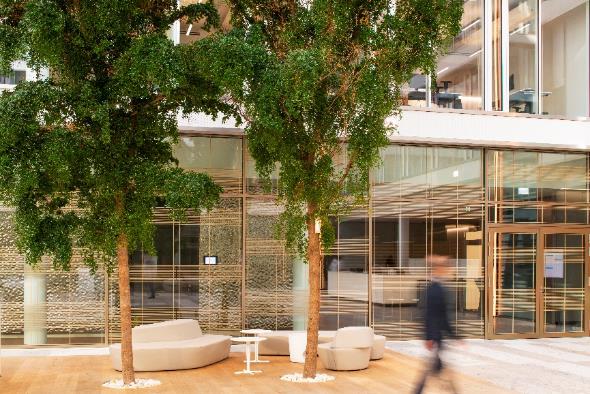
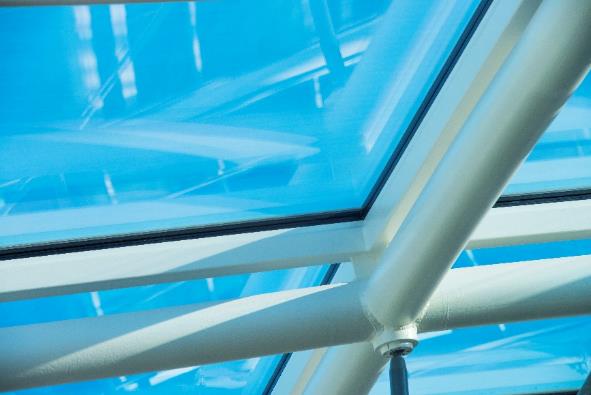
A first-class warm edge system with Ködispace 4SG
In order to meet the high demands for reliable sealing and long-lasting stability, the building materials and composites used for the construction of the NEWTON were extensively tested in advance. First and foremost the structural integrity of the Ködispace 4SG spacer system for the glass structure in the roof dome was evaluated. To compare the double-glazed insulating glass units to be installed, two digital models were created: one with a Ködispace 4SG spacer system and one with a conventional aluminum spacer. Both models were then examined in detail within the framework of a finite element analysis (FEA) assessing the shear loads in the edge compound system of the planned roof dome caused by the consequent deformation from the bending.


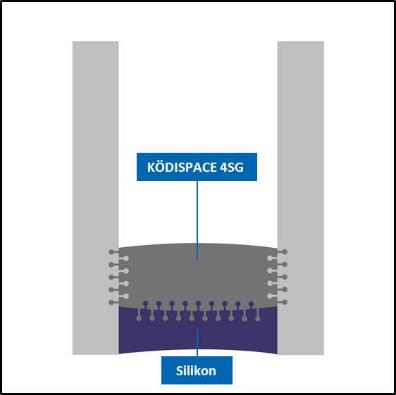
Bildnachweis: Kömmerling Chemische Fabrik
Still under construction: the CIBC Square urban development project in Toronto, Canada
In Canada’s megacity of Toronto, one of the most fascinating and largest construction projects is currently in progress. The new, sustainably planned CIBC Square with its two soaring glass towers will be shaping the skyline of the Canadian business centre and contributing to positive urban development for decades to come. The energy-efficient Warm Edge system from adhesive and sealant manufacturer H.B. Fuller | KÖMMERLING was used in the construction of the distinctive glass diamond shapes in the façades.
The first of the two 250-metre-high glass towers has already been completed. The second tower is currently under construction and is expected to be finalized in 2024. Wilkinson Eyre Architects from the UK are responsible for the striking design, while Toronto-based Adamson Associates Architects is in charge of the execution. A key project facet is the visionary redevelopment of a 33,000 square metre campus which includes a transport hub between Toronto’s financial district and the Lake Ontario waterfront. Previously separated from each other by the wide Union Station, the twin towers positioned to the north and south of the tracks will be connecting the two neighbourhoods in the future through a public park spanning high above the railway lines. On an area of one hectare, a nature-like oasis for meetings, cultural events and local recreation will be created on the fourth-floor level of the towers – with a sweeping view over the lake.
Visionary urban development
The towers themselves not only house the new Canadian Imperial Bank of Commerce (CIBC) headquarters, but also top-tier office and conference space for international firms. A podium with a spacious entrance lobby over several levels, housing retail, upscale dining and leisure facilities is also included. A new bus terminal for intercity lines is located in the southern tower which has already been built. Within the bases of both skyscrapers are various walkways, platforms and bridges that link all modes of transportation intersecting in the CIBC Square, including Toronto’s underground PATH pedestrian network, creating access to the waterfront.
With the development of this corporate campus, Toronto is opening up an area that will become a landmark project for the entire city through the successful combination of architecture, transportation infrastructure and its lakeside location. The CIBC Square was not only conceived as an exceptional working environment, but also as a space for communication and community, as an experiential environment and a recreational area. This includes the sustainable, ecological concept of the now interconnected public transport, as well as the sustainably planned architecture of the glass towers in compliance with international LEED® Platinum and WIRED & WELL Building™ standards.
Glass façades with highly efficient Warm Edge technology
Both 49- and 50-storey towers have a slightly fluted glass façade on all sides. Integrated into the exterior façade are diamond-shaped, prism-like backlit motifs, which are repeated at intervals of 10 storeys and contrast with the surrounding buildings as a result of their vertical scaling. To meet the high standards of excellent energy efficiency, 100-percent reliable impermeability and long-lasting stability of the structural glazing façade, the glass elements were equipped with the Warm Edge system from manufacturer H.B. Fuller | KÖMMERLING. This spacer system boasts exceptional gas-impermeability and longevity, even in the face of extreme temperature differences. The unique structure of the Warm Edge spacer technology is behind this outstanding performance: it consists of only one component, which is applied entirely automatically by robot and which chemically bonds with both the glass surface and the silicone secondary sealant. As a result, the entire edge seal literally “fuses” into a flexible and resilient unit offering unmatched energy efficiency and maximum service life. At the same time, the precise application of the black sealant creates a distinctively clean appearance and prevents any disturbing light reflections from arising in the space between the panes.
As part of the full-surface glass façades, the Warm Edge system from H.B. Fuller | KÖMMERLING makes a decisive contribution to the CIBC Square’s energy-efficient, sustainable architecture and beautifully demonstrates how innovative and environmentally friendly modern glass architecture can be.
Weitere Informationen und Belegexemplar an:
Kömmerling Chemische Fabrik GmbH
Alexandra Rohr
Zweibrücker Str. 200
D-66954 Pirmasens
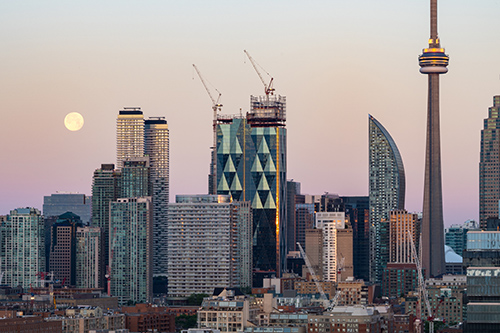
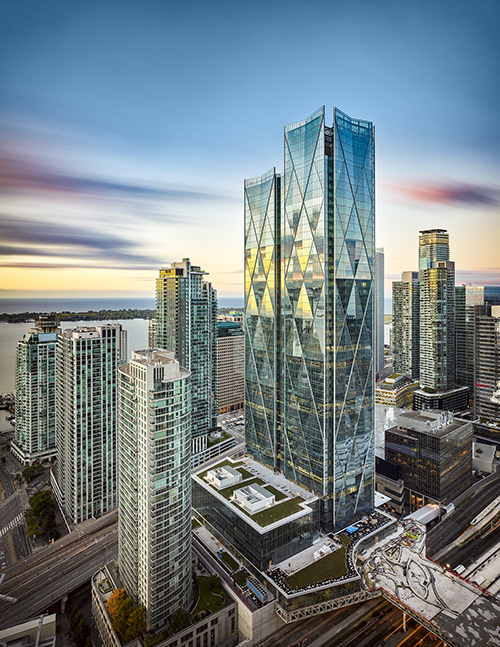
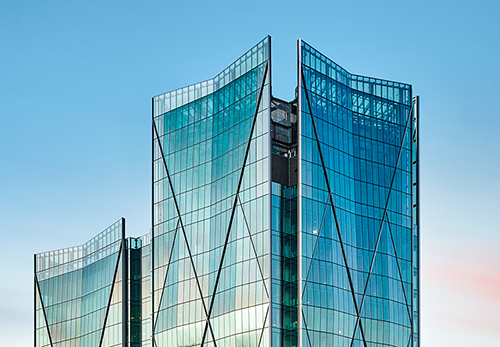
Building plate:
Project: CIBC Square, Toronto, Canada
Client: Ivanhoé Cambridge / Hines
Architectural design: Wilkinson Eyre Architects (WEA)
Architectural execution: Adamson Associates Architects
Completion date: 2024
Purpose: Banks, offices, conferences, gastronomy, culture, park
Façade construction: SOTAWALL, Tagg Industries
Glass elements: VIRACON®
Spacer system: Warm Edge from H.B. Fuller | KÖMMERLING
About H.B. Fuller | KÖMMERLING
Since 2017, Kömmerling Chemische Fabrik GmbH has been part of the US H.B. Fuller | KÖMMERLING adhesives group. With its three business areas – Engineering Adhesives, Construction Adhesives, and Hygiene, Health and Consumable Adhesives – the world's largest supplier of adhesives and sealants covers versatile and demanding adhesive and sealant applications used in a range of industries, including electronics, hygiene, medical, transportation, construction and renewable energies. The international group has sales of some $3 billion and 6,500 employees serving customers in more than 125 countries. The Pirmasens site has become the "Technology Center of Excellence" for insulating glass applications and is therefore responsible for research and development of new products and application fields as well as for advancing existing expertise.
Bildnachweis: Kömmerling Chemische Fabrik
H.B. Fuller | KÖMMERLING offers a ‘one-stop solution’ for every adhesive, sealant and other specialist chemical technology that RV manufacturers, among others, need to use to help them improve manufacturing processes, RV durability and performance, and, ultimately, the consumer experience when using them anywhere in the world.
By collaborating with customers across the global RV industry, H.B. Fuller has developed solutions for nearly every part of the RV manufacturing process, including panel lamination of sidewalls, floors, roofs and furniture production. Founded over 100 years ago, H.B. Fuller has supplied the RV industry for 30 years across Europe, USA, and Australia and, most recently, China.
In 2017, H.B. Fuller, the worldwide adhesive supplier, expanded its expertise in the RV sector with the acquisition of Kömmerling, a well-known brand which had also served the global RV industry for many years mainly focused on assembly bonding and sealing. Acting as one robust organisation, they now provide a specialist ‘one-stop shop’ for the RV industry - a global company with local expertise in all markets. While leveraging their combined network of R&D labs, H.B. Fuller has been able to develop a strong portfolio with a full spectrum of adhesive solutions. The company also promotes a close collaboration with OEMs to help them produce improved RVs that truly meet the demands of being used in any climate around the world.
Hotmelt and Reactive Hotmelt
Every adhesive and sealant solution has its specific application. It is often the customer’s needs and circumstances that define the adhesive technology finally recommended.
A popular adhesive in many industries, including furniture and laminated sandwich panels for the RV segment is the hotmelt technology - a fast adhesive solution with immediate position tack that does not require any further fixation of the parts. In principle, it is necessary to differentiate between thermoplastic
hotmelt and reactive hotmelt. Thermoplastic hotmelt is a non-reactive adhesive that becomes liquid at high temperatures above 130°C to make it easy to apply and stick parts together quickly. However, for items such as sandwich panels and furniture for areas exposed to high temperatures, like kitchens, there would be the risk of low resistance to heat. For these situations, the reactive hotmelt is more resistant to high temperatures and, therefore, more durable.
The working principle of reactive hotmelt is similar to the thermoplastic hotmelt explained above, as it is also applied once it has been heated and melted but it uses an additional chemical reaction to build a strong connection that cannot be opened again once it is cross-linked. This is quite a popular choice for sandwich panel construction for RV OEMs in North America, whereas European manufacturers mainly prefer to use liquid moisture cure products, such as H.B. Fuller’s Icema™ R 145 grades.
The H.B. Fuller Rakol® and Rapidex® reactive hotmelt products are used for flat lamination processes to create safe, durable, high quality furniture, flooring, doors and window products. For the process of edge banding in RV furniture production, there are both thermoplastic and reactive hotmelt products with heat resistance ranging from 75°C to 140°C in use.
Throughout its history, H.B. Fuller has built upon its strong knowledge by continuous innovation. Its scientists are always searching for new technologies that can help improve a customer’s operations, product applications and finished goods.
Words bei John Rawling for Aboutcamp BtoB
Read more on aboutcampbtob.eu.

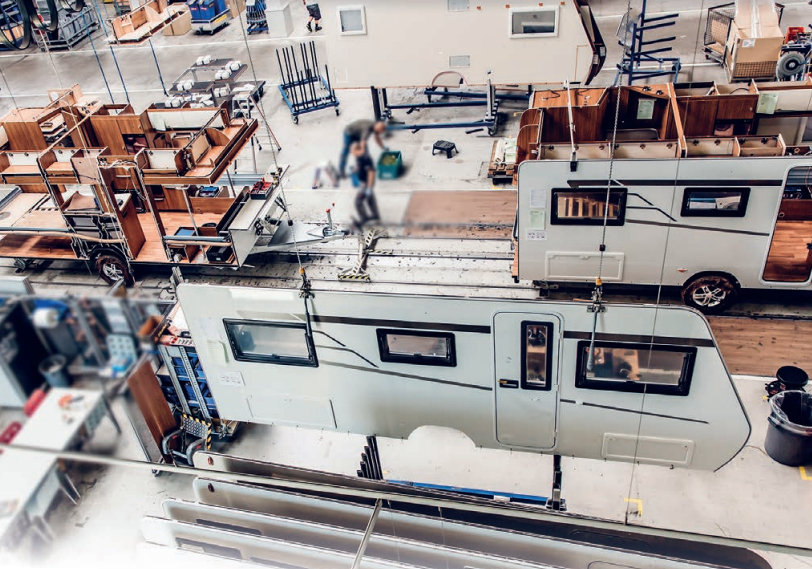
Global markets
RV OEMs using hotmelt adhesive from H.B. Fuller include wellknown brands across the global RV market as well as independent single producers, in major markets like the USA, Germany, France, Italy, UK and Slovenia. As part of its growth strategy, H.B. Fuller is now also better positioned to meet the increasing demand from the Australian and upcoming Chinese RV markets.
Continuous development
With more than 6,000 employees, 72 productions sites and 38 technology centres globally, H.B. Fuller has the power of a truly global adhesive provider with local expertise in each market it serves, and is continually undertaking huge amounts of R&D all over the world.
The three dedicated teams that specialize in the RV industry for the Americas, Europe and Asia Pacific regions benefit from being part of a global support capability and add customer value by deeply understanding local challenges, priorities and processes inside out. The company has a wide distribution network serving manufacturers of all sizes and ensures the same level of expertise in every corner of the globe.
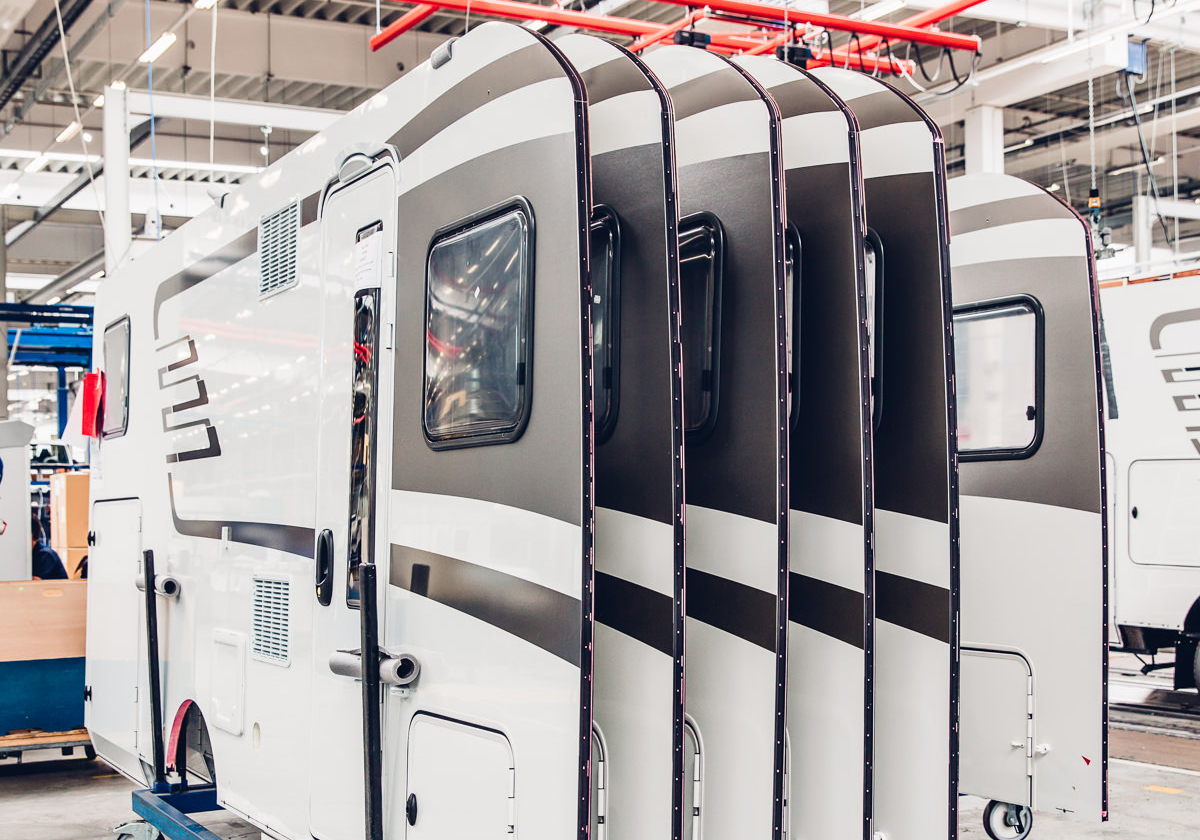
Weitere Informationen und Belegexemplar an:
Kömmerling Chemische Fabrik GmbH
Alexandra Rohr
Zweibrücker Str. 200
D-66954 Pirmasens
Bildnachweis: H.B. Fuller | Kömmerling
Energy-efficient Warm Edge system enhances living spaces with a view
Large-scale structural glazing façades not only distinguish commercial buildings but are also used increasingly for residential properties.
Glass residential architecture is extremely popular in major US cities. A special project has now been completed in the New York borough of Manhattan. In Hudson Square, a glass tower directly on top of a historic building has created a new and very distinctive living space. In the insulating glass, the highly efficient Warm Edge system from manufacturer H.B. Fuller | KÖMMERLING ensures low energy costs and a comfortable living environment.
Living space is in short supply everywhere. And American cities like New York are in urgent need of housing. Redensification is a viable option for gaining space – not only at ground level but above all in terms of height. At 102 Charlton Street, in Hudson Square on the south side of the block between Greenwich and Hudson Streets, New York real estate company Lalezarian Properties completed a new project in the winter of 2021/2022. A modern residential building with 22 floors was erected on top of an existing five-storey building. Thanks to its unique design, the new building cleverly closes a narrow gap between buildings, blending in visually with the surrounding high rises, while leaving the historic structure of the old building, including its ornate façade, untouched.
Combining historic and modern architecture
Ismael Leyva Architects, based in New York, were responsible for the design. The mid-sized architectural firm undertakes many projects in residential construction as well as in the field of renovation and redesign of historic and heritage-protected buildings. Their design philosophy is based on a combination of functional, aesthetically pleasing and ecologically responsible contemporary design: a portfolio that comes together very elegantly in the new building on Hudson Square.
Apart from its western façade, the 64-metre-high building is entirely glazed. The staggered upper third of the tower jumps back over a sloping line and opens up a distinctive silhouette when viewed from the street. The new building comprises a total of 61 residential units. Of these, the five top floors are designed as full-storey flats. A roof terrace accessible to all residents completes the tower at the top. The common amenities of the residential building also include a lift, a recreation room, lockers for parcels and a bicycle room in the basement. With air conditioning, hardwood floors, energy-efficient electrical appliances and convenient details such as USB charging sockets, the flats are equipped to highest standard. The large, glazed areas let plenty of natural daylight into the spaces while offering unobstructed views of bustling Manhattan.
Elastic edge seal for high energy efficiency
To achieve maximum energy efficiency in the building and to make optimum use of air conditioning in the units, the glazing in the façade is fitted with the Ködispace 4SG Warm Edge system from H.B. Fuller | KÖMMERLING, the adhesives and sealants manufacturer. The reactive thermoplastic spacer for insulating glass ensures the highest possible energy efficiency and maximum service life, combined with a truly unique appearance. Insulating glass with Ködispace 4SG has proven to be exceptionally robust, resilient and durable, as the chemical and elastic bond between sealant and glass creates a tight yet extremely flexible edge seal. As a result, the thermoplastic spacer withstands the temperature extremes between summer and winter common on the American East Coast and reliably keeps moisture from entering the unit. The thermal insulating properties of the glass remain permanently intact. This not only ensures a feel-good atmosphere in the new flats, it also saves the residents heating and air-conditioning costs over the long term.
A unique aesthetic thanks to fully automatic application
The Warm Edge solution not only meets the most stringent requirements for a permanently tight edge seal while maximising living comfort, it also stands out in terms of design. The spacer system is applied to the insulating glass using a fully automated robot. This enables extremely precise production down to a tenth of a millimetre, even with multiple panes – without any disturbing offset of the spacer profiles. Robot-assisted production also enables the creation of unusual window shapes such as the angled glass elements in the new Charlton Street building, or even rounded glazing. The black Ködispace 4SG also eliminates unpleasant light reflections and makes the space between the panes practically invisible – for an unobstructed view to the outside.
For the new development, the glass elements were manufactured by Oldcastle BuildingEnvelope® at its plant in Perrysburg, Ohio. Together with the Warm Edge system from H.B. Fuller | KÖMMERLING, they make a decisive contribution to a comfortable indoor environment, high-quality design and energy efficiency in the new residential building at 102 Charlton Street in New York.
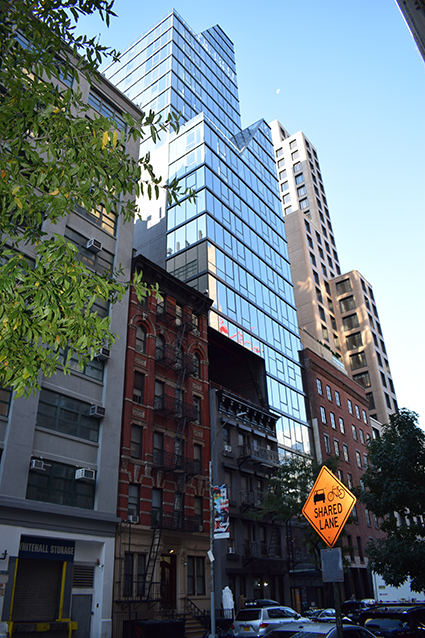
In New York’s Manhattan borough, a large, glazed tower directly on top of a historic building creates new living space.
Image credit: H.B. Fuller | KÖMMERLING

In the insulating glass panes made with the highly efficient Warm Edge system from H.B. Fuller | KÖMMERLING ensures low energy costs and a pleasant living environment.
Image credit: H.B. Fuller | KÖMMERLING
Site plan
Project: 102 Charlton Street, New York, USA
Client: Lalezarian Properties, New York, USA
Architect: Ismael Leyva Architects, New York, USA
Completion date: 2022
Insulating glass manufacturer: Oldcastle BuildingEnvelope®, Perrysburg, USA
Warm Edge: Ködispace 4SG by
H.B. Fuller | KÖMMERLING
About H.B. Fuller | KÖMMERLING
Since 2017, Kömmerling Chemische Fabrik GmbH, as H.B. Fuller | KÖMMERLING, has been part of the US H.B. Fuller adhesives group. With its three business units – Engineering Adhesives, Construction Adhesives and Hygiene, Health and Consumable Adhesives – the world’s largest supplier of adhesives and sealants covers a wide range of demanding adhesive and sealant applications used in a number of industries such as electronics, hygiene, medicine, transport, construction and renewable energies. The international group generates sales of some 3 billion US dollars and has 6,500 employees serving customers in more than 125 countries. The Pirmasens site has become the “Technology Center of Excellence” for insulating glass applications and is therefore responsible for research and development of new products and fields of application as well as for advancing existing expertise.
Quality of support and expertise a key factor for new relationship
Tuffx, one of the country’s leading manufacturers of specialist glass for both the residential and commercial markets, has forged a long-term partnership with Kommerling UK. The latter is providing Tuffx with a range of hotmelts and specialist resins that are being incorporated into several of the company’s market leading products including glass for balustrades, canopies and stair treads.
Paul Higgins, Purchasing Manager at Tuffx, explained more; “Opportunities for laminated products in which the glass has one or more inherent properties eg photovoltaic capabilities or UV protection, are only going to increase as we see glass used in ever more creative ways, in both the commercial and high end residential markets. It became clear that Kommerling could offer us far more than just a high-performance product. From our first meeting the support from both the team here in the UK, backed up by extensive technical and development expertise in Germany has been first class.” He continued; We very much view this as a collaboration where our knowledge of glass manufacturing combined with Kommerling’s unrivalled expertise in the development and production of resins will lead to some exciting new products in the not too distant future.”
Kommerling supplies both its Koedigaurd UV-HS R liquid composite for Tuffx’s structural applications and Isomelt M, a hotmelt, for its IG glass range. Chris Davis, Composites Manager for Kommerling UK, said;” We are delighted to be working with Tuffx, and that they have recognised the true value of our technical and product support. We look forward to fruitful joint technical collaboration on various projects in the coming months that will deliver new products that we believe will extend how and where glass is used and which will excite the architectural community.”
The product that Tuffx has introduced on its production line is Koedigaurd UV-HS R liquid composite. With exceptional performance in terms of the strength of the finished bond, combined with quicker processing times and the ability to apply it to bespoke pieces of glass without having to subject them to a lengthy application and curing process, the product is delivering very real benefits in terms of production times. This in turn means that not only are customer lead times reduced but so are direct production costs.
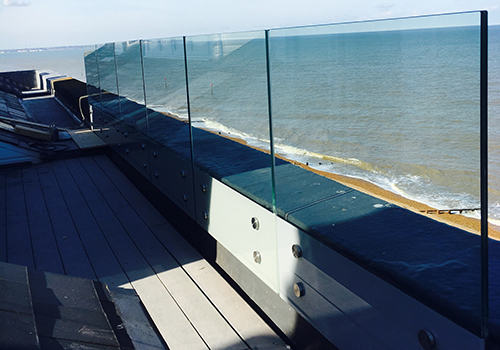

Background
Tuffx Processed Glass Ltd, has nearly twenty years’ experience in specialist, toughened safety glass manufacturing. Tuffx is established as one of the UK’s most progressive, customer-oriented companies. The company is based in Knowsley, Merseyside where it employs 156 people. For more information on Tuffx products visit
Koemmerling Chemische Fabrik GmbH is a leading international manufacturer of high-quality adhesives and sealants. Its European headquarters and extensive research and development facilities are in Pirmasens, Germany and it has a network of subsidiaries, sales offices and sales partners, in more than 80 different countries. With over 110 years’ experience, the company has established itself as an innovative market leader in provision of Polysulfide, Polyurethane, Silicone and Polyisobutylene sealants for the automotive, insulating glass and photovoltaic industries. In April 2015, Royal Holdings, Inc. through its Kommerling UK Limited subsidiary, acquired CIL.
Koemmerling Chemische Fabrik has been awarded ISO 9001, ISO 14001 ISO 50001 and OHSAS 18001 certification.
To find out more, Aboutcamp BtoB interviewed Iñaki Sigler - Marketing Manager, Durable Assembly - EIMEA at H.B. Fuller, and Ralf Fuhrmann - Business Manager, Transportation Adhesives & Aftermarket at Kömmerling Chemische Fabrik GmbH, an H.B. Fuller company.
H.B. Fuller is a major industrial adhesives manufacturer with factories and customers worldwide. It is headquartered in Minnesota, U.S. The recent acquisition of Royal Adhesives brought its annual turnover to $2.3 billion and included the Kömmerling brand and technology.
Aboutcamp BtoB: What has been the driver to bring these two companies together for the RV market in Europe?
Iñaki: H.B. Fuller has acquired Royal's business globally. In Europe, this means Kömmerling, and we now operate as a single company.
Ralf: Both H.B. Fuller and Kömmerling have been supplying the same market but with little overlap between their products. For example, H.B. Fuller was well known for its range of adhesives for sandwich panels and furniture, and Kömmerling is well known for its sealants and adhesives for assembly bonding and interior finishing. It was really quite amazing how our products complemented each other, a perfect fit you might say. The acquisition has, therefore, provided the opportunity to offer a one-stop solution for all RV manufacturers. This means the one company can now supply all the sealants and adhesives needed by the RV industry where previously this was not possible.
Aboutcamp BtoB: Did you each have RV manufacturer customers already in Europe?
Ralf: Yes, we did. I was hired some 20 years ago by Kömmerling to develop the RV sector and have been doing so ever since, together with an international team in the relevant European market. Beside this, H.B. Fuller has been in the RV market for more than 30 years.
Aboutcamp BtoB: How big do you think the European market is?
Ralf: Looking at RV production numbers, the European market is very large. Indeed, we jointly supply some 1,000 tonnes of adhesives and sealants each year. We have many customers with both large production operations but also with independent single producers. So, we are already a big player in the market, and we definitely want to grow further.
Aboutcamp BtoB: Do you also sell these products outside Europe, for example to the U.S. or Australia?
Ralf: We are a global company, and we have production sites and colleagues around the world, but Kömmerling has only a small presence outside Europe. We sell to the Australian market, and a couple of years ago, we began to manufacture and sell in China. We see this as a market with excellent growth potential.
Aboutcamp BtoB: Presumably you see yourselves as competitors to Henkel, Sika, Deka and so on?
Ralf: Exactly! Competition is strong, and we are now in a better position to expand our business than ever before, as we are now able to supply every single technology needed for production of high quality recreational vehicles.
Aboutcamp BtoB: What about new applications and products? Hwo do you go about testing to ensure fitness for purpose?
Ralf: Having a product for every conceivable RV application is key to the success of the new venture, and as new applications arise, we will commence dialogue with our client's technical teams and purchasing departments to better understand their requirements. Once we have a specific request, we discuss it face to face to understand the application and what environmental or other conditions might influence the joint line. Extensive testing is then carried out on the original customer substrates according to the conditions in which the new application will be used. Only once we are 100-percent happy is the new product or application released for production. But it's not only RV manufacturers we talk to about new applications. With new materials constantly coming to the market, we stay ahead of the game by talking directly to RV material suppliers and by testing samples before anything goes into production.
Aboutcamp BtoB: Which is your best-selling product in the RV market?
Ralf: Both parts of the business - legacy H.B. Fuller and Kömmerling - have strong product applications. H.B. Fuller was very strong in the sandwich panel fabrication and furniture markets, and these adhesives remain best sellers. Twenty years ago one-part polyurethane solutions dominated the market in other areas, but Kömmerling came along with a range of silane-terminated polymers and marketed these across the European RV sector. Isocyanate and solvent-free solutions have good adhesion on a wide range of substrate materials, and they offer good temperature and UV resistance. Today, these products are amongst our best sellers.
Aboutcamp BtoB: How is the adhesives industry evolving? For example, we hear quite a bit about 'Hot Melt'. Is this a process that's gaining ground?
Iñaki: There are different solutions to meet different needs. For example, there are thermoplastic hot melt and reactive hot melt in use. H.B. Fuller is very strong in both types of technology, but in the sandwich element fabrication market, one- or two-component, liquid reactive adhesives dominate. Some years ago, the use of reactive hot melt adhesives was analyzed for this application in order to speed up fabrication times. With reactive hot melt, it's ready to go as soon as it's cool, whereas with liquid reactive adhesives, pressure over time is needed for the chemical reaction to take place. We have very good reactive hot melt solutions, though we work closely with customers to determine the right solution. What we do is align our proudcts very closely to the conditions our customers have or want to implement. If they are liquid reactive proudcts and our customers want to change a line, we work with them from the beginning to adjust our formulations to give maximum performance under the new conditions.
Ralf: Unlike the non-reactive thermoplastic hot melts, reactive hot melt adhesive is transformed into an infusible bond, making it more resistant to high temperatures and, therefore, more durable. In Europe, reactive hot melt technology is not widely used with sandwich panel production. It is seen more often in the U.S. market.
Iñaki: That's very true. We do supply reactive and thermoplastic hot melt adhesives to factories worldwide - high quality furniture manufacturing is one example and is an application field in RV industries as well.


Ralf Fuhrmann
"We are delighted to be part of this exciting opportunity. Our name is already well established in the RV sector in Europe, and now, with the backing of H.B. Fuller and its complementary product range, we can offer our customers new technologies and even better value. We look forward to the challenges ahead and to working with our customers to solve them."
Iñaki Sigler
"Combining these two businesses allows us to offer our RV customers new technologies, expertise and capabilities. For the first time, we can submit problem-solving passion that has been our hallmark. We will continue to discover and apply innovations in adhesive technology and to help our customers excel in this area."
Company profile
H.B. Fuller
From a one-man wallpaper paste shop in Minnesota in 1887, H.B. Fuller has grown into a $2.3 billion adhesives global leader today. Its recent acquisition of Royal, further strengthens its market reach as teh two companies have very little customer or product overlap. Nowhere is this more evident than with Royal's European brand, Kömmerling, a major supplier to the RV industry in Europe.
Kömmerling
Headquartered in Pirmasens, some 170 km south west of Frankfurt, and founded in 1897, Kömmerling is a leading international manufacturer of high-quality adhesives and sealants. In this capacity, it has been supplying the RV industry in Europe and beyond for more than 20 years. It became a member of H.B. Fuller's global network through the company's acquisition of Royal Adhesives & Sealants in October 2017.
Source: Aboutcamp BtoB, issue June 2018
Melbourne: Warm Edge for cold bent glass
Modern glass architecture places extreme demands on the permanent energy efficiency and gas-tightness of the insulating glass. Ködispace 4SG is a tried-and-tested, high-performance warm-edge system that is ideal for demanding structural glazing projects - such as the impressive Chadstone shopping mall in Australia.
On the fine line between form and function, glass facades today have to blast seemingly irrefutable physical boundaries. What is already feasible is shown by the boldly flowing glass-steel roof of the Chadstone mall in Melbourne. The three-dimensional shape of the more than 7,000 square meter roof construction results from steel knots, rods and edge beams. They carry 2,672 cold-bent insulating glass units with the thermoplastic spacer Ködispace 4SG as a warm-edge system.
Not a single one of the 1.2 to 8 sqm insulated glass units is identical to one of the others, as each one has to adapt differently to the organic shape of the building. For this purpose, the 39 mm thick, double-insulating glass was cold bent and fixed in their respective profile during installation. Cold bending also deforms the edge bond, which can easily lead to leaks in the space between the panes of conventional spacers. The warm edge with Ködispace 4SG, on the other hand, compensates for the deformations significantly better than rigid spacer systems, as the reactive polyisobutylene chemically bonds both to the glass surface and to the silicone sealant, thereby “blending” the entire edge bond to form a flexible and resilient unit.
The high load capacity of the spacer was demonstrated by experimental component tests as well as by finite element simulations. Thus, Ködispace 4SG ensures excellent long-term stability and permanent gas-tightness even with curved insulating glass units.

Not a single one of the 1.2 to 8 sqm insulated glass units is identical to one of the others, as each one has to adapt differently to the organic shape of the building.
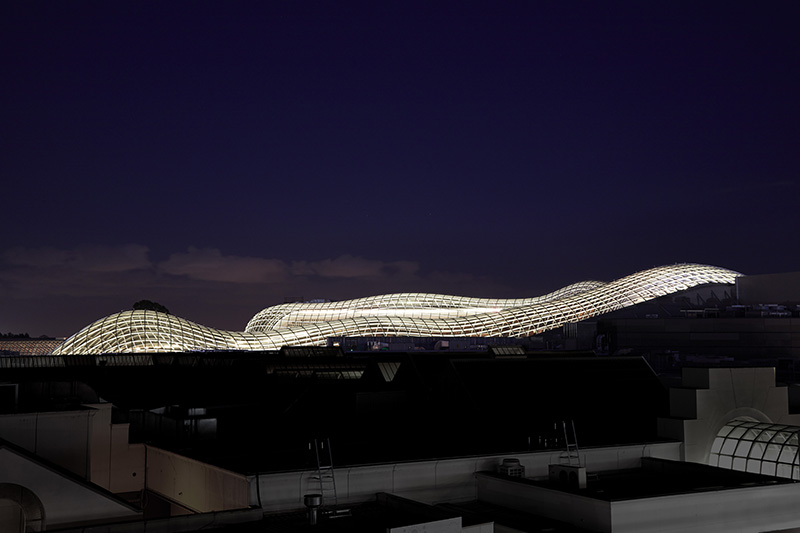
In the flowing glass roof of the Chadstone Mall in Melbourne, the flexible warm edge system with Ködispace 4SG ensures that the cold-bent insulating glass is permanently gas-tight.
For further information and to forward a specimen copy,
please contact:
Kömmerling Chemische Fabrik GmbH
Alexandra Rohr
Zweibrücker Str. 200
D-66954 Pirmasens
E-Mail: marketing@koe-chemie.de
www.koe-chemie.de
About the Kömmerling Chemische Fabrik GmbH
Since 2017, the Kömmerling Chemische Fabrik GmbH has been part of the US H.B. Fuller | KÖMMERLING Adhesives Group. The world’s largest supplier of adhesives and sealants for insulating glass applications therefore has significant expertise in this area, which is constantly being advanced at H.B. Fuller | KÖMMERLING at its German site in Pirmasens through research and new fields of application. With its three business units – Engineering Adhesives, Construction Adhesives and Hygiene, Health and Consumable Adhesives – H.B. Fuller | KÖMMERLING covers a wide range of high-quality adhesive and sealant applications that are used in a variety of industries such as electronics, hygiene, medicine, transportation, construction and renewable energies. The international group generates sales of close to 3 billion US dollars and has 6,500 employees serving customers in more than 125 countries.
